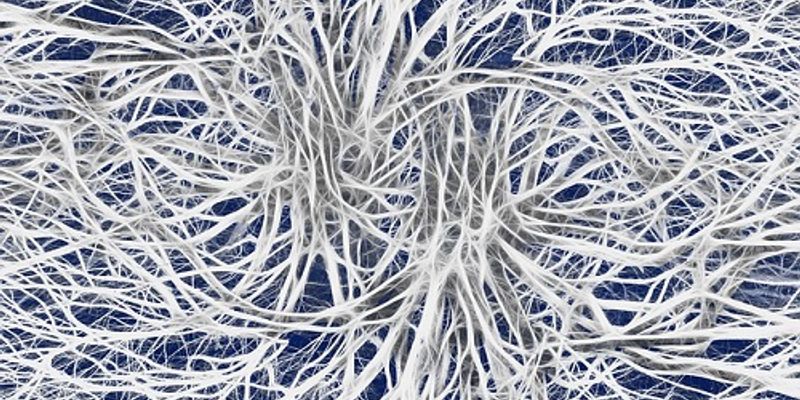Transduction
Transduction: the transfer of genetic material from one organism (as a bacterium) to another by a genetic vector and especially a bacteriophage
-
The hippocampal formation is one of the most extensively studied regions of the brain, with well described anatomy and basic physiology; moreover, aspects of human memory mediated by hippocam...
MAR 18, 2015 | 9:00 AM
The Brain Research through Advancing Innovative Neurotechnologies (BRAIN) Initiative has the ambitious goal of elucidating how neuronal ensembles interactively encode higher brain processes....
MAR 18, 2015 | 7:30 AM
The dorsal anterior cingulate cortex (dACC), orbitofrontal cortex (OFC), ventrolateral and ventromedial prefrontal cortex (vlPFC, vmPFC) and their connections with the basal ganglia play a ce...
The dopamine-containing neurons of the midbrain have been implicated in a broad array of psychiatric disorders, ranging from schizophrenia to drug abuse and depression. However, studies seem...
OCT 30, 2014 | 3:00 PM
Oncogenic mutations in isocitrate dehydrogenase 1 (IDH1) or 2 (IDH2) compromise their normal activity and induce NADPH-dependent (D)2-hydroxyglutarate (2HG) production within the cytosol or m...
Speaker:
Christian Metallo, PhD
OCT 29, 2014 | 1:30 PM
Tumor cells often display fundamental changes in metabolism and increase their uptake of nutrients to meet the increased bioenergetic demands of proliferation. Glucose and glutamine are two m...
Speaker:
Mei Kong, PhD
SEP 24, 2014 | 2:00 PM
Master regulatory transcription factors localize to the genome in a manner influenced by chromatin accessibility and influencing global chromatin structure. With an interest in understanding...
The human genome encodes ~21,500 proteins that are subject to reversible phosphorylation at nearly 1 million phosphosites by about 538 protein kinases and 156 protein phosphatases. Amongst ot...
Speaker:
Steve Pelech, PhD
MAR 20, 2014 | 2:00 PM
Parkinsons disease is the most common neurodegenerative movement disorder. Over the past few years, studies have identified a number of genes that cause or contribute to the pathogenesis of t...
MAR 20, 2014 | 1:00 PM
The cholinergic system is a potent neuromodulatory system which plays a critical role in cortical plasticity, attention and learning. The cholinergic activation of the cortex increases the si...
MAR 20, 2014 | 1:00 PM
Neural stem cells exist in the adult mammalian brain throughout life. They reside in the subgranular layer of the dentate gyrus and in the subventricular zone. Neural stem cells have the capa...
MAR 20, 2014 | 12:00 PM
Alzheimers disease (AD) is a common neurodegenerative disorder characterized clinically by progress decline in memory and thinking and pathologically by the presence of senile plaques and neu...
MAR 20, 2014 | 11:00 AM
Alzheimers disease (AD) is a neurodegenerative disorder producing cognitive impairment and dementia in millions of elders. Currently no treatment is effective to slow the progression of AD. M...
MAR 20, 2014 | 10:00 AM
With a rising prevalence recently exceeding 1%, autism spectrum disorder (ASD) has become a pressing public health issue. Crucial hurdles on the way to targeted treatments are (i) the relianc...
MAR 20, 2014 | 10:00 AM
When speaking of neurodegenerative diseases, average public is not made aware of the true cost that brain related disorders have on annual budget. The true impact on economy is not usually...
MAR 20, 2014 | 10:00 AM
Neuroimaging plays a large role in our pursuit of the understanding of behavior and cognition in health and disease. The past decade has seen the emergence of a wealth of resources that suppo...
MAR 20, 2014 | 9:00 AM
The Brain Research through Advancing Innovative Neurotechnologies (BRAIN) Initiative is part of a new Presidential focus aimed at revolutionizing our understanding of the human brain. By acce...
Speaker:
Story Landis, PhD, Thomas R. Insel, MD, Justin Sanchez, PhD, John C. Wingfield
Presented at: Neuroscience Virtual Event Series 2014
MAR 20, 2014 | 8:00 AM
...
MAR 20, 2014 | 8:00 AM
Late onset dementia is usually a multi-factorial disease wherein cumulative pathological brain insults (of more than one pathology) results in progressive cognitive decline which ultimately l...
MAR 20, 2014 | 7:00 AM
The brain is a complex, densely wired circuit made out of heterogeneous cells, which vary in their shapes, molecular composition, and patterns of connectivity. In order to help discover how n...
MAR 20, 2014 | 7:00 AM
Huntington's disease (HD) is a progressive, inherited, degenerative brain disorder that produces physical, mental and emotional changes. Named for George Huntington, the physician who fi...
MAR 20, 2014 | 6:00 AM
Connectomics is a new field of research that aims to map the synapses of the nervous system in order to construct a wiring diagram of all the neural circuits. It is necessary to use the elect...
MAR 19, 2014 | 1:00 PM
ATP-binding cassette transporter A1 (ABCA1) mediates cholesterol efflux to lipid-free apolipoproteins such as apolipoprotein A-I (apoA-I) and apolipoprotein E (apoE). ABCA1 is essential regul...
MAR 19, 2014 | 1:00 PM
The Willerth lab investigates how to engineer neural tissue by combining pluripotent stem cells, controlled drug delivery and biomaterial scaffolds. When generating these replacement tissues,...
The hippocampal formation is one of the most extensively studied regions of the brain, with well described anatomy and basic physiology; moreover, aspects of human memory mediated by hippocam...
MAR 18, 2015 | 9:00 AM
The Brain Research through Advancing Innovative Neurotechnologies (BRAIN) Initiative has the ambitious goal of elucidating how neuronal ensembles interactively encode higher brain processes....
MAR 18, 2015 | 7:30 AM
The dorsal anterior cingulate cortex (dACC), orbitofrontal cortex (OFC), ventrolateral and ventromedial prefrontal cortex (vlPFC, vmPFC) and their connections with the basal ganglia play a ce...
The dopamine-containing neurons of the midbrain have been implicated in a broad array of psychiatric disorders, ranging from schizophrenia to drug abuse and depression. However, studies seem...
OCT 30, 2014 | 3:00 PM
Oncogenic mutations in isocitrate dehydrogenase 1 (IDH1) or 2 (IDH2) compromise their normal activity and induce NADPH-dependent (D)2-hydroxyglutarate (2HG) production within the cytosol or m...
Speaker:
Christian Metallo, PhD
OCT 29, 2014 | 1:30 PM
Tumor cells often display fundamental changes in metabolism and increase their uptake of nutrients to meet the increased bioenergetic demands of proliferation. Glucose and glutamine are two m...
Speaker:
Mei Kong, PhD
SEP 24, 2014 | 2:00 PM
Master regulatory transcription factors localize to the genome in a manner influenced by chromatin accessibility and influencing global chromatin structure. With an interest in understanding...
The human genome encodes ~21,500 proteins that are subject to reversible phosphorylation at nearly 1 million phosphosites by about 538 protein kinases and 156 protein phosphatases. Amongst ot...
Speaker:
Steve Pelech, PhD
MAR 20, 2014 | 2:00 PM
Parkinsons disease is the most common neurodegenerative movement disorder. Over the past few years, studies have identified a number of genes that cause or contribute to the pathogenesis of t...
MAR 20, 2014 | 1:00 PM
The cholinergic system is a potent neuromodulatory system which plays a critical role in cortical plasticity, attention and learning. The cholinergic activation of the cortex increases the si...
MAR 20, 2014 | 1:00 PM
Neural stem cells exist in the adult mammalian brain throughout life. They reside in the subgranular layer of the dentate gyrus and in the subventricular zone. Neural stem cells have the capa...
MAR 20, 2014 | 12:00 PM
Alzheimers disease (AD) is a common neurodegenerative disorder characterized clinically by progress decline in memory and thinking and pathologically by the presence of senile plaques and neu...
MAR 20, 2014 | 11:00 AM
Alzheimers disease (AD) is a neurodegenerative disorder producing cognitive impairment and dementia in millions of elders. Currently no treatment is effective to slow the progression of AD. M...
MAR 20, 2014 | 10:00 AM
With a rising prevalence recently exceeding 1%, autism spectrum disorder (ASD) has become a pressing public health issue. Crucial hurdles on the way to targeted treatments are (i) the relianc...
MAR 20, 2014 | 10:00 AM
When speaking of neurodegenerative diseases, average public is not made aware of the true cost that brain related disorders have on annual budget. The true impact on economy is not usually...
MAR 20, 2014 | 10:00 AM
Neuroimaging plays a large role in our pursuit of the understanding of behavior and cognition in health and disease. The past decade has seen the emergence of a wealth of resources that suppo...
MAR 20, 2014 | 9:00 AM
The Brain Research through Advancing Innovative Neurotechnologies (BRAIN) Initiative is part of a new Presidential focus aimed at revolutionizing our understanding of the human brain. By acce...
Speaker:
Story Landis, PhD, Thomas R. Insel, MD, Justin Sanchez, PhD, John C. Wingfield
Presented at: Neuroscience Virtual Event Series 2014
MAR 20, 2014 | 8:00 AM
...
MAR 20, 2014 | 8:00 AM
Late onset dementia is usually a multi-factorial disease wherein cumulative pathological brain insults (of more than one pathology) results in progressive cognitive decline which ultimately l...
MAR 20, 2014 | 7:00 AM
The brain is a complex, densely wired circuit made out of heterogeneous cells, which vary in their shapes, molecular composition, and patterns of connectivity. In order to help discover how n...
MAR 20, 2014 | 7:00 AM
Huntington's disease (HD) is a progressive, inherited, degenerative brain disorder that produces physical, mental and emotional changes. Named for George Huntington, the physician who fi...
MAR 20, 2014 | 6:00 AM
Connectomics is a new field of research that aims to map the synapses of the nervous system in order to construct a wiring diagram of all the neural circuits. It is necessary to use the elect...
MAR 19, 2014 | 1:00 PM
ATP-binding cassette transporter A1 (ABCA1) mediates cholesterol efflux to lipid-free apolipoproteins such as apolipoprotein A-I (apoA-I) and apolipoprotein E (apoE). ABCA1 is essential regul...
MAR 19, 2014 | 1:00 PM
The Willerth lab investigates how to engineer neural tissue by combining pluripotent stem cells, controlled drug delivery and biomaterial scaffolds. When generating these replacement tissues,...
























